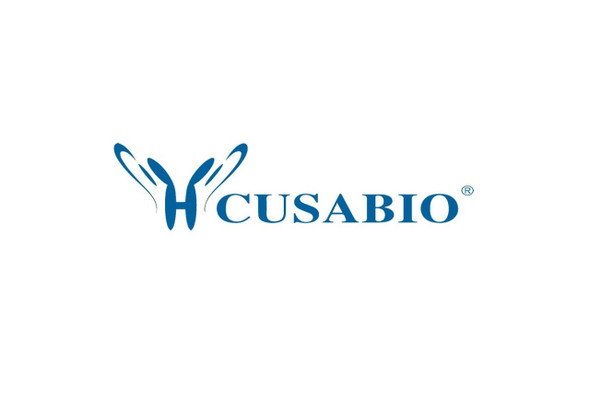Cusabio Mouse Recombinants
Recombinant Mouse Granzyme A (Gzma) | CSB-EP010081MO
- SKU:
- CSB-EP010081MO
- Availability:
- 3 - 7 Working Days
Description
Recombinant Mouse Granzyme A (Gzma) | CSB-EP010081MO | Cusabio
Alternative Name(s): Autocrine thymic lymphoma granzyme-like serine protease CTLA-3 Fragmentin-1 T cell-specific serine protease 1
Gene Names: Gzma
Research Areas: Cell Biology
Organism: Mus musculus (Mouse)
AA Sequence: IIGGDTVVPHSRPYMALLKLSSNTICAGALIEKNWVLTAAHCNVGKRSKFILGAHSINKEPEQQILTVKKAFPYPCYDEYTREGDLQLVRLKKKATVNRNVAILHLPKKGDDVKPGTRCRVAGWGRFGNKSAPSETLREVNITVIDRKICNDEKHYNFHPVIGLNMICAGDLRGGKDSCNGDSGSPLLCDGILRGITSFGGEKCGDRRWPGVYTFLSDKHLNWIKKIMKGSV
Source: E.coli
Tag Info: N-terminal 6xHis-B2M-tagged
Expression Region: 29-260aa
Sequence Info: Full Length of Mature Protein
MW: 39.6 kDa
Purity: Greater than 90% as determined by SDS-PAGE.
Relevance: Abundant protease in the cytosolic granules of cytotoxic T-cells and NK-cells which activates caspase-independent cell death with morphological features of apoptosis when delivered into the target cell through the immunological synapse. It cleaves after Lys or Arg. Cleaves APEX1 after 'Lys-31' and destroys its oxidative repair activity. Cleaves the nucleosome assembly protein SET after 'Lys-189', which disrupts its nucleosome assembly activity and allows the SET complex to translocate into the nucleus to nick and degrade the DNA
Reference: "Genomic organization of the mouse granzyme A gene. Two mRNAs encode the same mature granzyme A with different leader peptides." Hershberger R.J., Gershenfeld H.K., Weissman I.L., Su L. J. Biol. Chem. 267:25488-25493(1992)
Storage: The shelf life is related to many factors, storage state, buffer ingredients, storage temperature and the stability of the protein itself. Generally, the shelf life of liquid form is 6 months at -20?/-80?. The shelf life of lyophilized form is 12 months at -20?/-80?.
Notes: Repeated freezing and thawing is not recommended. Store working aliquots at 4? for up to one week.
Function: Abundant protease in the cytosolic granules of cytotoxic T-cells and NK-cells which activates caspase-independent cell death with morphological features of apoptosis when delivered into the target cell through the immunological synapse. It cleaves after Lys or Arg. Cleaves APEX1 after 'Lys-31' and destroys its oxidative repair activity. Cleaves the nucleosome assembly protein SET after 'Lys-189', which disrupts its nucleosome assembly activity and allows the SET complex to translocate into the nucleus to nick and degrade the DNA (By similarity).
Involvement in disease:
Subcellular Location: Secreted, Cytoplasmic granule
Protein Families: Peptidase S1 family, Granzyme subfamily
Tissue Specificity: Found in cytotoxic lymphocytes and in normal lymphoid tissues such as thymus and spleen.
Paythway:
Form: Liquid or Lyophilized powder
Buffer: If the delivery form is liquid, the default storage buffer is Tris/PBS-based buffer, 5%-50% glycerol. If the delivery form is lyophilized powder, the buffer before lyophilization is Tris/PBS-based buffer, 6% Trehalose, pH 8.0.
Reconstitution: We recommend that this vial be briefly centrifuged prior to opening to bring the contents to the bottom. Please reconstitute protein in deionized sterile water to a concentration of 0.1-1.0 mg/mL.We recommend to add 5-50% of glycerol (final concentration) and aliquot for long-term storage at -20?/-80?. Our default final concentration of glycerol is 50%. Customers could use it as reference.
Uniprot ID: P11032
HGNC Database Link: N/A
UniGene Database Link: UniGene
KEGG Database Link: KEGG
STRING Database Link: STRING
OMIM Database Link: N/A









